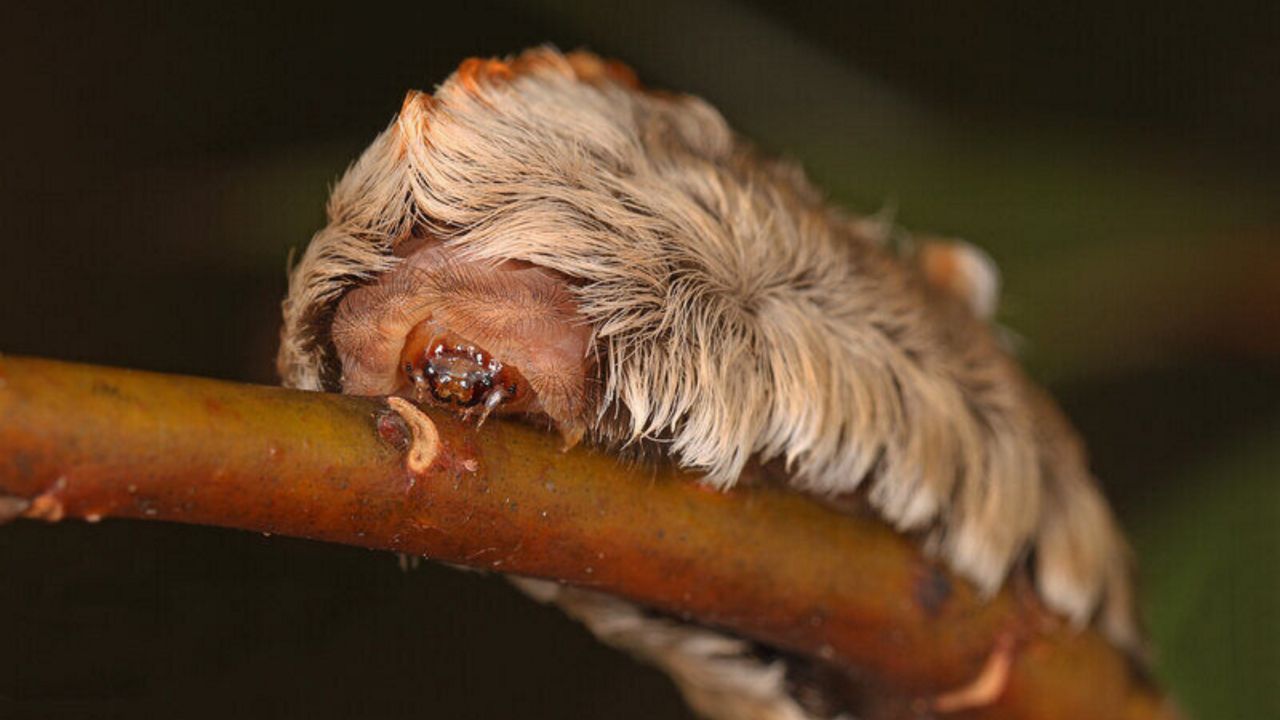TEXAS — We’re in the middle of caterpillar season, and with that comes a fair warning. Fuzzy-looking caterpillars have been noticed in San Antonio, their fur resembling that of a cat or mouse. They may seem soft, but to pick them up would be a mistake, as they could be venomous.
Not all fuzzy caterpillars are venomous, but puss caterpillars, or “asps,” certainly are. Hidden in its hair-like bristles are stinging toxic spines that can cause a burning and itching sensation to human skin. They often have a brown or gray color, and may have black and white markings on their body. Some have an orange or yellow line running along their form.
According to wildlife experts, puss caterpillars are largely found in Texas, Florida, New Jersey and Arkansas. The caterpillars are usually south of Dallas or in west Texas. But they’re predominantly in San Antonio from March through December.
The southern flannel moth is the adult version of a puss caterpillar, and they come out during late spring and early summer to lay hundreds of eggs in trees. They like to stay in trees such as apple, basswood, cherry, dogwood, elm, maple, plum and oak. Corn crops are also a habitat for them. Texas A&M AgriLife Today stated, “Texans statewide should be on the alert and keep an eye on trees and shrubs for caterpillar development, which typically occurs now into the fall.”
Called the “most painful caterpillar in Texas,” AgriLife Today said that coming into contact with a puss caterpillar is so painful that it might even lead to a trip to the hospital. And the bigger they are, the more toxins they hold.
Health experts describe the more serious sting symptoms as follows:
- Immediate, intense pain that often comes in waves
- A swelling, itching rash of red blotches and raised ridges
- Restlessness and anxiety
- Headaches
- Nausea and vomiting
- Fever
- Muscle cramps
- Swollen gland
- Symptoms of respiratory shock and stress
Not everyone will have the same reaction to the sting, as it can depend upon the thickness of the skin and where you’re stung, according to officials. The pain can last for hours or several days.
For cases that are less severe, AgriLife instructs sting victims to brush off any leftover spines from the caterpillar, wash the infected area with water and soap, apply an ice pack and use an oral antihistamine for itch relief. The pain should leave within an hour.
If you stumble upon any caterpillars and are not sure if it’s venomous, the best thing to do is not touch them.



